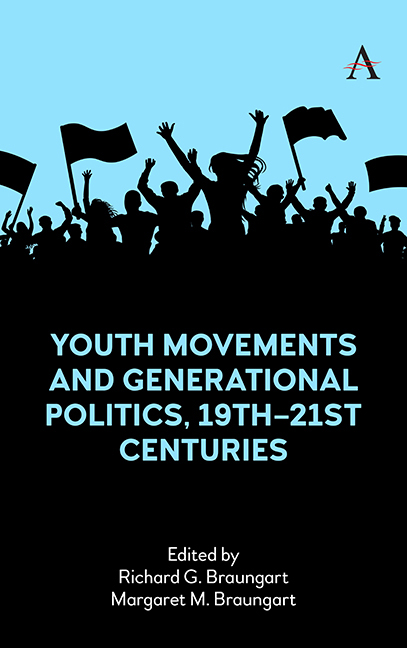17 - Why Youth in Youth Movements?
Published online by Cambridge University Press: 18 November 2023
Summary
“Germany should replace Bavarians or Hanoverians!”
“Nobody has the right to keep liberty from us!”
Burschenschaft, student movement in Germany in 1815.
“Youth will bring a new empire of liberty and man, and save the Serbian soul from vice and decay!”
Mlada Bosna, youth movement prior to World War I.
“Step down you old ones!”
“National Socialism is the will of organized youth!” Hitler Jugend, late 1920s–1930s.
“Hell no, we won't go!”
“Power to the people!” 1960s anti-Vietnam War student protests in the United States.
“We want democracy! Down with bureaucracy, down with corruption!”
“Vive la liberté !” 1989 Chinese student protests in Beijing.
Youth Movements
Youth have been causing their elders problems since antiquity, perhaps nowhere more dramatically than when they have banded together in large numbers to form youth movements. The first full-fledged youth movement erupted in 1815 at Jena University when German students formed the Burschenschaft (Students’ Association) to protest the failures of the Congress of Vienna and champion nationalism and the unification of the fractured German states. Students at other German universities quickly took up the cause—longhaired and liberal, protesting, marching and singing: “We fight for the day when the fatherland shall have her liberty! For we shall have an empire free! In rank and class all equals be!” (Esler, 1971, p. 50). It was not all youthful marching and singing. A particularly dramatic event of this first youth movement was Karl Sand's assassination of August von Kotzebue, well-known editor, author, critic and political reactionary of his day:
All Germany was shaken by the deed. The assassin, Karl Sand, tried unsuccessfully to kill himself at the same time. The student activists hailed Sand's deed as a “sign of that which will and must come.” They came in droves to see his execution, and they purchased as sacred relics the boards on which Sand's blood was splattered. For years afterward, the members of the Heidelberg Burschenschaft would gather in a cottage built from the scaff old's timbers as guests of Sand's executioner. It was a rite for a dualistic death wish, terrorism and suicidalism, altruism and aggression (Feuer, 1969, p. 7).
- Type
- Chapter
- Information
- Youth Movements and Generational Politics, 19th-21st Centuries , pp. 429 - 454Publisher: Anthem PressPrint publication year: 2023

